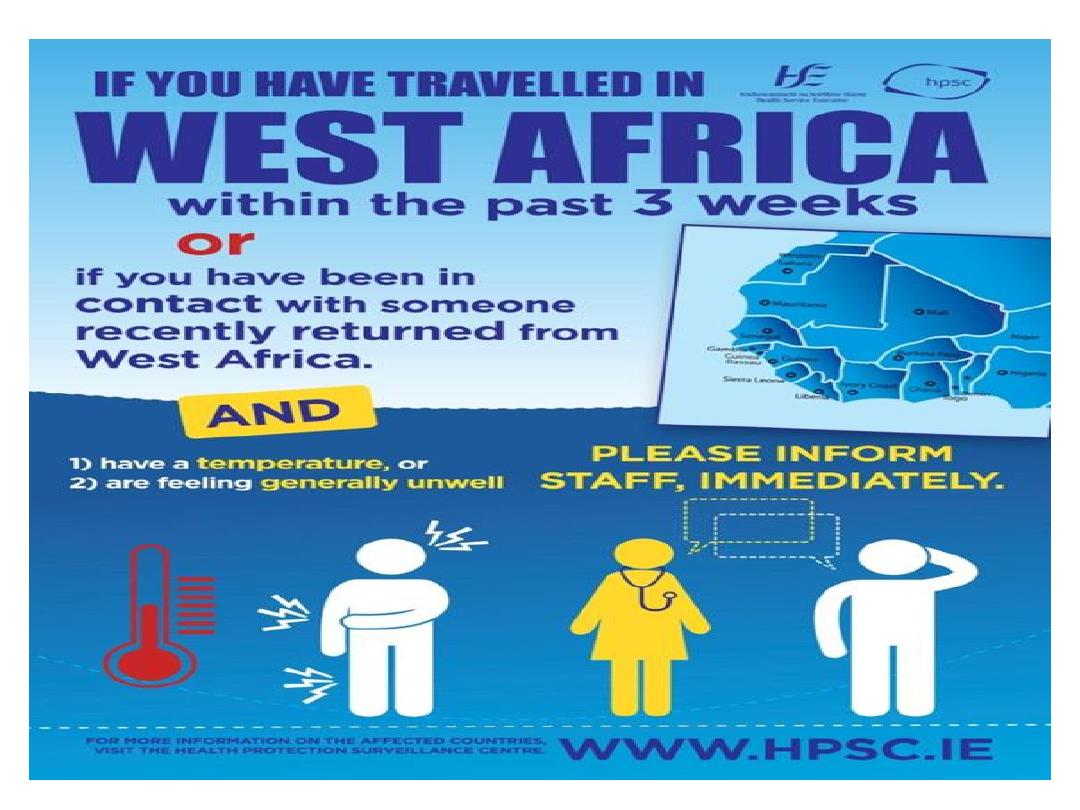
Haemorrhagic fevers
Dr. Ameer kadhim Hussein.
M.B.Ch.B. FICMS (Community Medicine).

Ebola virus disease

Introduction
• The Ebola virus causes an acute serious illness which is
often fatal if untreated.
• Ebola virus disease (EVD) first appeared in 1976 in 2
simultaneous outbreaks, one in Nzara, Sudan, and the other
in Yambuku, Democratic Republic of Congo. The latter
occurred in a village near the Ebola River, from which the
disease takes its name.
• The last outbreak in West Africa, (first cases notified in
March 2014), is the largest and most complex Ebola
outbreak since the Ebola virus was first discovered in 1976.
There have been more cases and deaths in this outbreak than
all others combined.
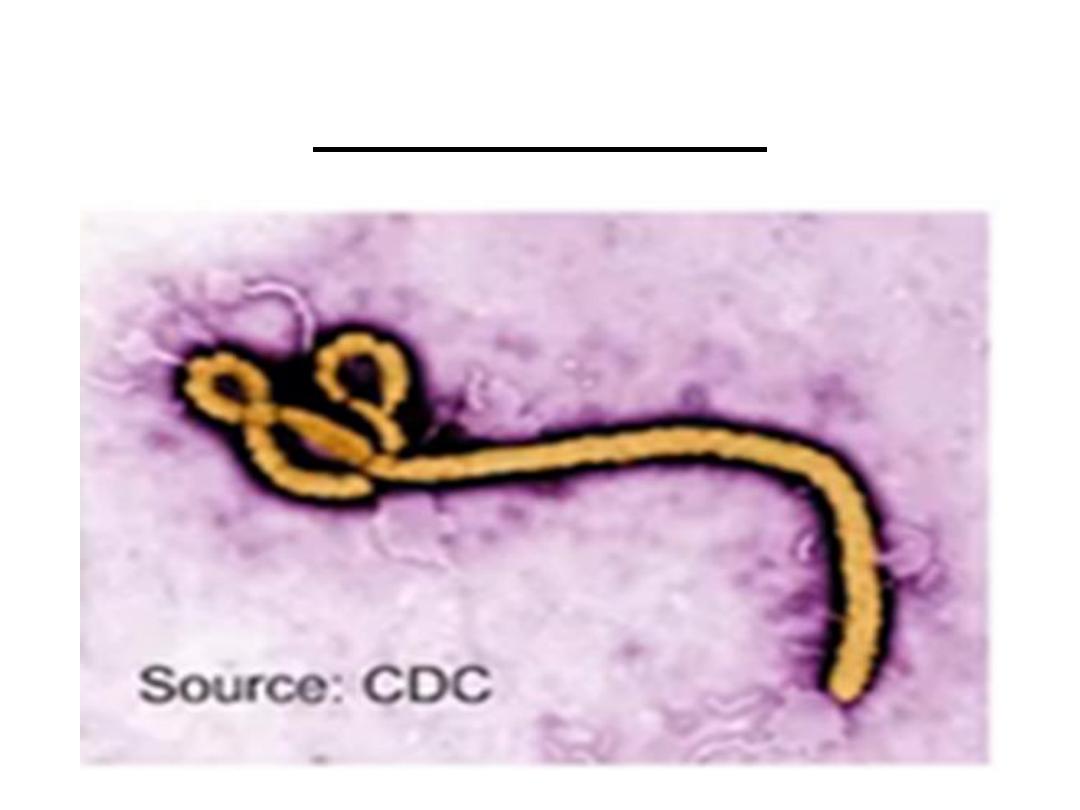
Ebola virus

Introduction
• Ebola spread between countries starting in Guinea then
spreading across land borders to Sierra Leone and Liberia,
by air (1 traveller) to Nigeria and USA (1 traveller), and by
land to Senegal (1 traveller) and Mali (2 travellers).
• The most severely affected countries, Guinea, Liberia and
Sierra Leone, have very weak health systems, lack human
and infrastructural resources, and have only recently
emerged from long periods of conflict and instability.
• The family of virus is Filoviridae which includes three
virus genera; Ebolavirus, Marburgvirus and Cuevavirus.
• The Ebolavirus has 5 species. The Zaire species is
responsible for the West African outbreak 2014.

Ebola outbreaks, 1976-2014

Transmission
• It is thought that fruit bats of the Pteropodidae family are
natural Ebola virus hosts. Ebola is introduced into the
human population through close contact with the blood,
secretions, organs or other body fluids of infected animals
such as chimpanzees, fruit bats, monkeys.
• Ebola then spreads through human-to-human transmission
via direct contact (through broken skin or mucous
membranes) with the blood, secretions, organs or other
body fluids of infected people, and with surfaces and
materials (e.g. bedding, clothing) contaminated with these
fluids.

Transmission
• Health-care workers have frequently been infected while
treating patients with suspected or confirmed EVD.
• People remain infectious as long as their blood contains
the virus.
• No formal evidence exists about sexual transmission, but
sexual transmission from convalescent patients cannot be
ruled out.
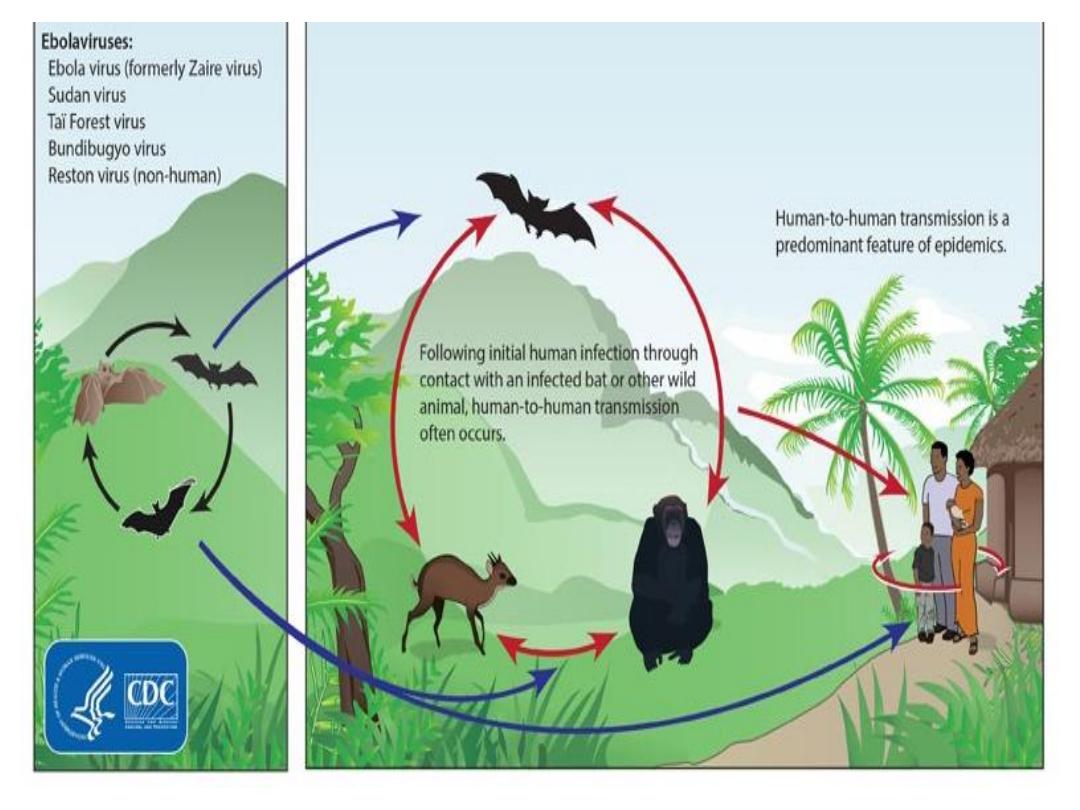
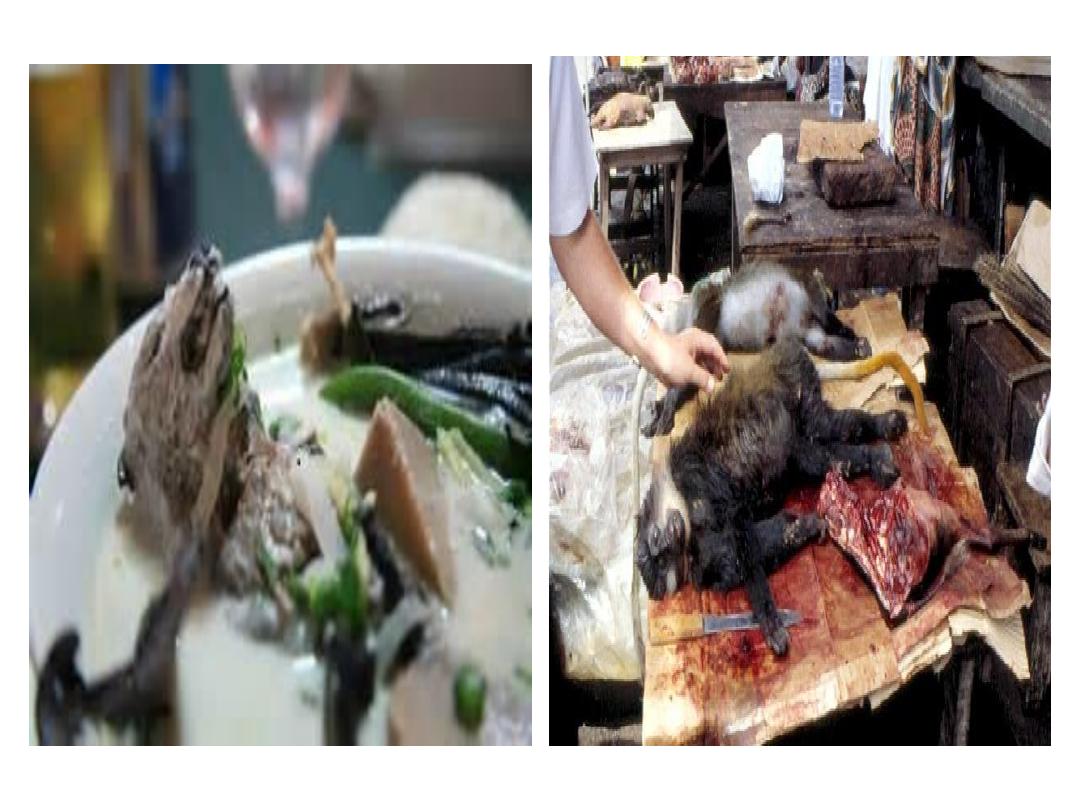
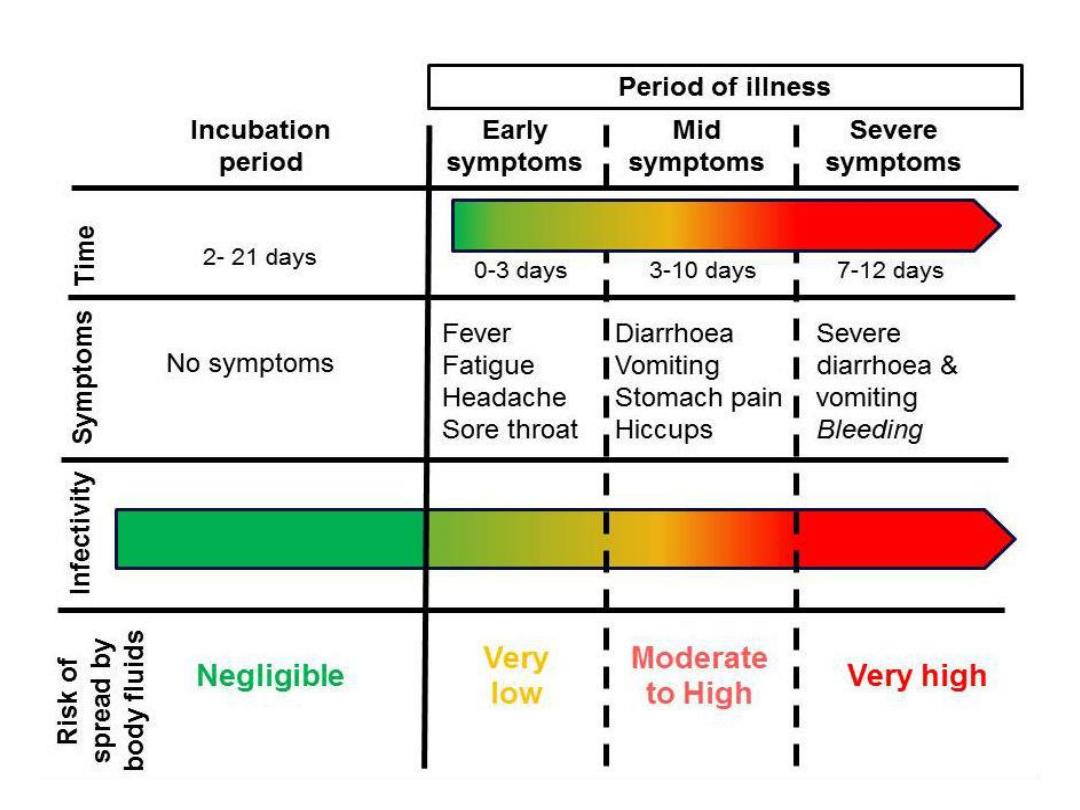

Symptoms of Ebola virus disease
• The incubation period, that is, the time interval from
infection with the virus to onset of symptoms is 2 to 21
days.
• Humans are not infectious until they develop symptoms.
First symptoms are the sudden onset of fever, fatigue,
muscle pain, headache and sore throat.
• This is followed by vomiting, diarrhoea, rash, symptoms of
impaired kidney and liver function, and in some cases, both
internal and external bleeding (e.g. oozing from the gums,
blood in the stools).
• Laboratory findings include low white blood cell and
platelet counts and elevated liver enzymes.
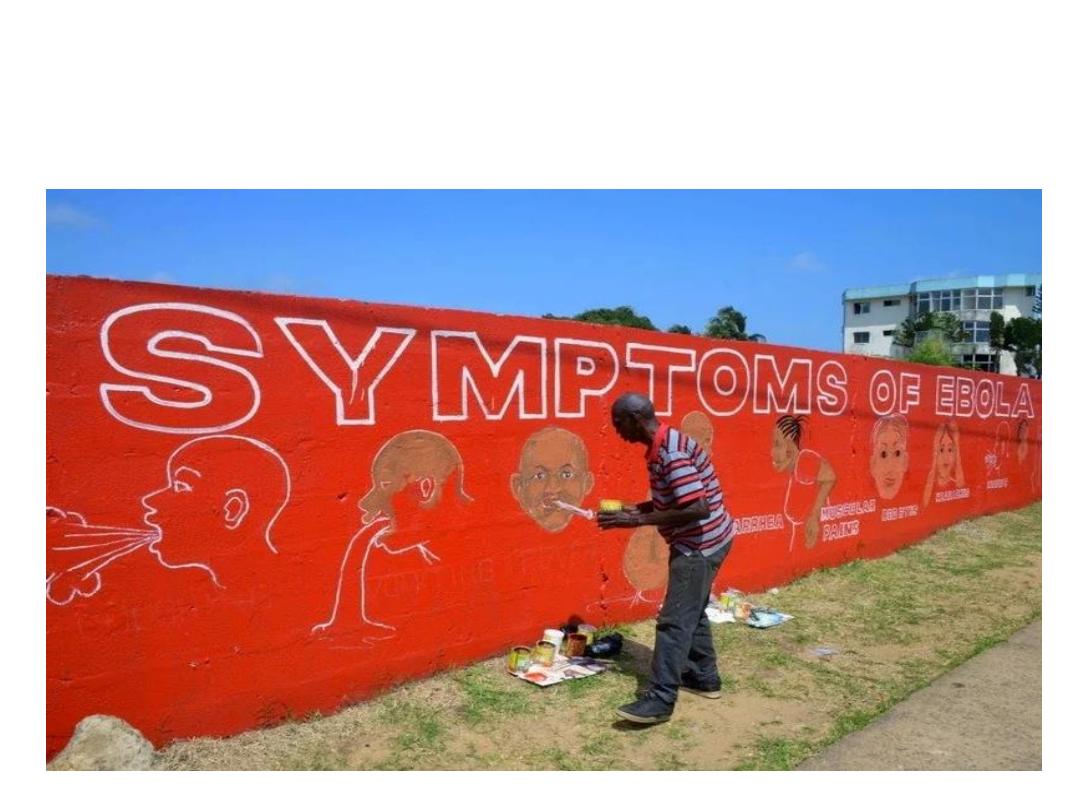
Symptoms of Ebola virus disease

Symptoms of Ebola virus disease

Diagnosis
• It can be difficult to distinguish EVD from other infectious
diseases such as malaria, typhoid fever and meningitis.
Confirmation that symptoms are caused by Ebola virus
infection are made using the following investigations:
1. Antibody-capture enzyme-linked immunosorbent assay
(ELISA).
2. Antigen-capture detection tests.
3. Serum neutralization test.
4. Reverse transcriptase polymerase chain reaction (RT-PCR)
assay.
5. Electron microscopy.
6. Virus isolation by cell culture.

Treatment and vaccines
• Supportive care-rehydration with oral or intravenous fluids
and treatment of specific symptoms, improves survival.
There is as yet no proven treatment available for EVD.
However, a range of potential treatments including blood
products, immune therapies and drug therapies are currently
being evaluated.
• No licensed vaccines are available yet, but 2 potential
vaccines are undergoing human safety testing.

Prevention and control
• Community engagement is key to successfully controlling
outbreaks.
• Raising awareness of risk factors for Ebola infection and
protective measures that individuals can take is an effective
way to reduce human transmission.
• Risk reduction messaging should focus on several factors:
1. Reducing the risk of wildlife-to-human transmission.
2. Reducing the risk of human-to-human transmission.
3. Reducing the risk of possible sexual transmission.
4. Outbreak containment measures.

Reducing the risk of wildlife-to-human
transmission
.
Reducing the risk of wildlife-to-human
transmission from contact with infected fruit bats
or consumption of their raw meat.
Animals should be handled with gloves and other
appropriate protective clothing.
Animal products (meat) should be thoroughly
cooked before consumption.

Reducing the risk of human-to-human
transmission
Reducing the risk of human-to-human transmission
from direct or close contact with people with Ebola
symptoms, particularly with their bodily fluids.
Gloves and appropriate personal protective
equipment should be worn when taking care of ill
patients at home. Regular hand washing is required
after visiting patients in hospital, as well as after
taking care of patients at home.

Reducing the risk of possible sexual
transmission
Reducing the risk of possible sexual transmission,
because the risk of sexual transmission cannot be ruled
out, men and women who have recovered from Ebola
should abstain from all types of sex (including anal- and
oral sex) for at least three months after onset of
symptoms.
If sexual abstinence is not possible, male or female
condom use is recommended. Contact with body fluids
should be avoided and washing with soap and water is
recommended. WHO does not recommend isolation of
male or female convalescent patients whose blood has
been tested negative for Ebola virus.

Outbreak containment measures
Outbreak containment measures, including:
Prompt and safe burial of the dead.
identifying people who may have been in contact with
someone infected with Ebola and monitoring their
health for 21 days.
the importance of separating the healthy from the sick
to prevent further spread, and the importance of good
hygiene and maintaining a clean environment.

Controlling infection in health-care settings
• Health-care workers should always take standard precautions when
caring for patients, these include basic hand hygiene, respiratory
hygiene, use of personal protective equipment, safe injection
practices and safe burial practices.
• Health-care workers caring for patients with suspected or
confirmed Ebola virus should apply extra infection control
measures to prevent contact with the patient’s blood and body
fluids and surfaces or materials such as clothing and bedding.
When in close contact (within 1 metre) of patients with EBV,
health-care workers should wear face protection, gown and gloves.
• Laboratory workers are also at risk. Samples taken for investigation
of Ebola infection should be handled by trained staff and processed
in suitably equipped laboratories.
